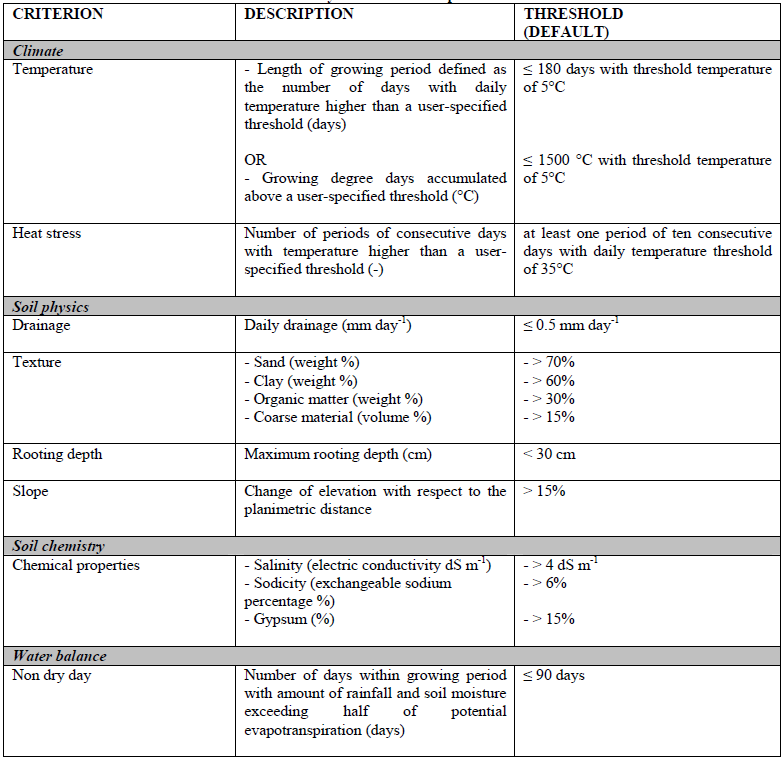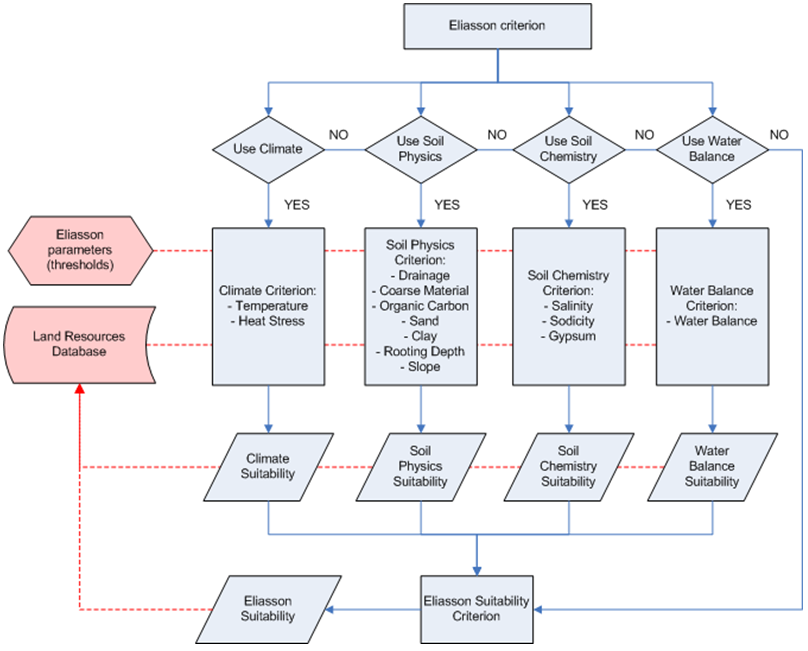This approach derives from the work of Eliasson et al. (2010), aimed at evaluating the suitability of generic agriculture areas according to natural constraints. The guidelines which led to the development of the original version of this approach are:
The implementation of this method in the UNIMI.Suitability component includes options for using different typologies of information and it can be parameterized for different crops.
The table below reports the list of the eight criteria adapted from Eliasson et al. (2010), together with their description and default thresholds.

Two classes were developed for each criterion, based on relative thresholds: (i) not limiting, (ii) severely and (iii) very severely limiting conditions. Criteria are assessed according to the agronomic law of the minimum (Liebig’s law).As soon as one of the considered criteria is rated as ‘severely limiting’, the corresponding land is judged to present severe limitations for agricultural activities in general or for a specific crop (depending on the parameterization adopted). In order to account for between-year variability of the length of the growing season, temperature accumulation, heat stress and soil moisture balance, these characteristics are classified as severely limiting in a probabilistic approach. A characteristic is classified as being severely limiting if the probability of exceeding the severe limit is more than 20 % (i.e., constraint occurs at least in 7 years out of 30). The criteria are applied to single cell points and the mapping should ensure that the scales of the soil and climate data are compatible with the scale at which the area is classified.
The suitability criteria are organized in categories (i.e., climate, soil physics, soil chemistry and water balance), thus enabling the option to run the assessment tests also separately (obtaining criteria for partial suitabilities), according to user information and aims.
The flow-chart below displays the functioning of the Less favoured areas suitabilty criterion (Eliasson criterion).

Created with the Personal Edition of HelpNDoc: Easy EPub and documentation editor